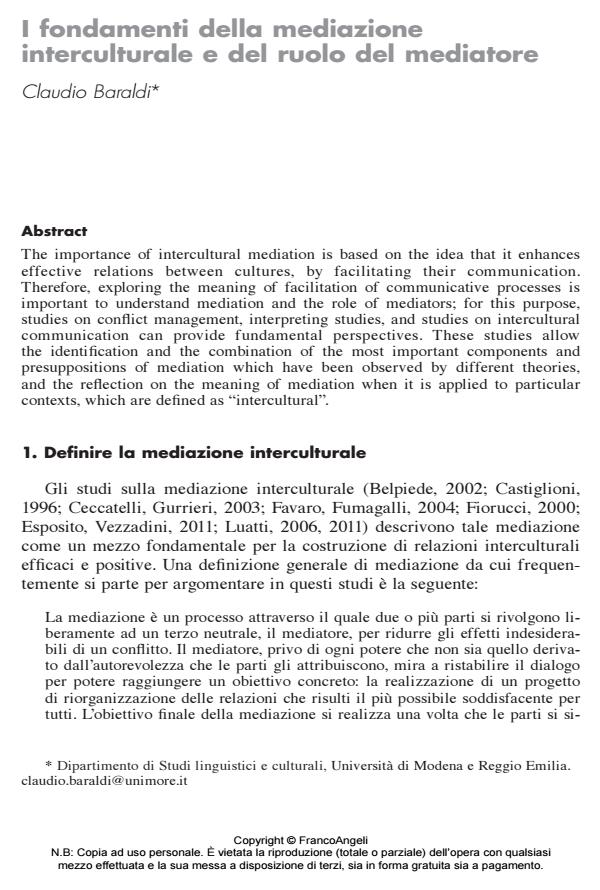I fondamenti della mediazione interculturale e del ruolo del mediatore
Titolo Rivista SICUREZZA E SCIENZE SOCIALI
Autori/Curatori Claudia Baraldi
Anno di pubblicazione 2013 Fascicolo 2013/1
Lingua Italiano Numero pagine 15 P. 66-80 Dimensione file 243 KB
DOI 10.3280/SISS2013-001006
Il DOI è il codice a barre della proprietà intellettuale: per saperne di più
clicca qui
Qui sotto puoi vedere in anteprima la prima pagina di questo articolo.
Se questo articolo ti interessa, lo puoi acquistare (e scaricare in formato pdf) seguendo le facili indicazioni per acquistare il download credit. Acquista Download Credits per scaricare questo Articolo in formato PDF

FrancoAngeli è membro della Publishers International Linking Association, Inc (PILA)associazione indipendente e non profit per facilitare (attraverso i servizi tecnologici implementati da CrossRef.org) l’accesso degli studiosi ai contenuti digitali nelle pubblicazioni professionali e scientifiche
The importance of intercultural mediation is based on the idea that it enhances effective relations between cultures, by facilitating their communication. Therefore, exploring the meaning of facilitation of communicative processes is important to understand mediation and the role of mediators; for this purpose, studies on conflict management, interpreting studies, and studies on intercultural communication can provide fundamental perspectives. These studies allow the identification and the combination of the most important components and presuppositions of mediation which have been observed by different theories, and the reflection on the meaning of mediation when it is applied to particular contexts, which are defined as "intercultural".
Claudia Baraldi, I fondamenti della mediazione interculturale e del ruolo del mediatore in "SICUREZZA E SCIENZE SOCIALI" 1/2013, pp 66-80, DOI: 10.3280/SISS2013-001006